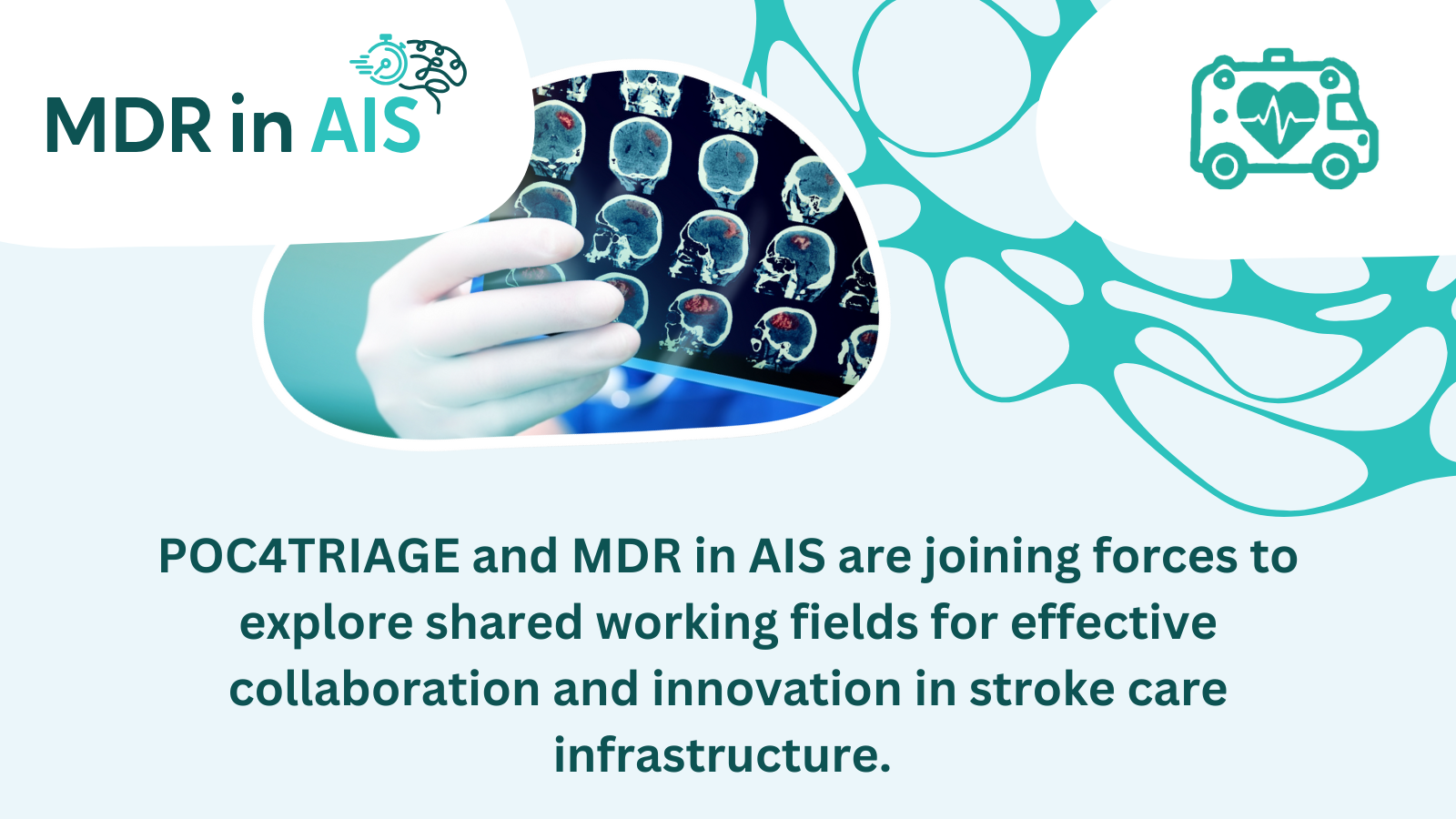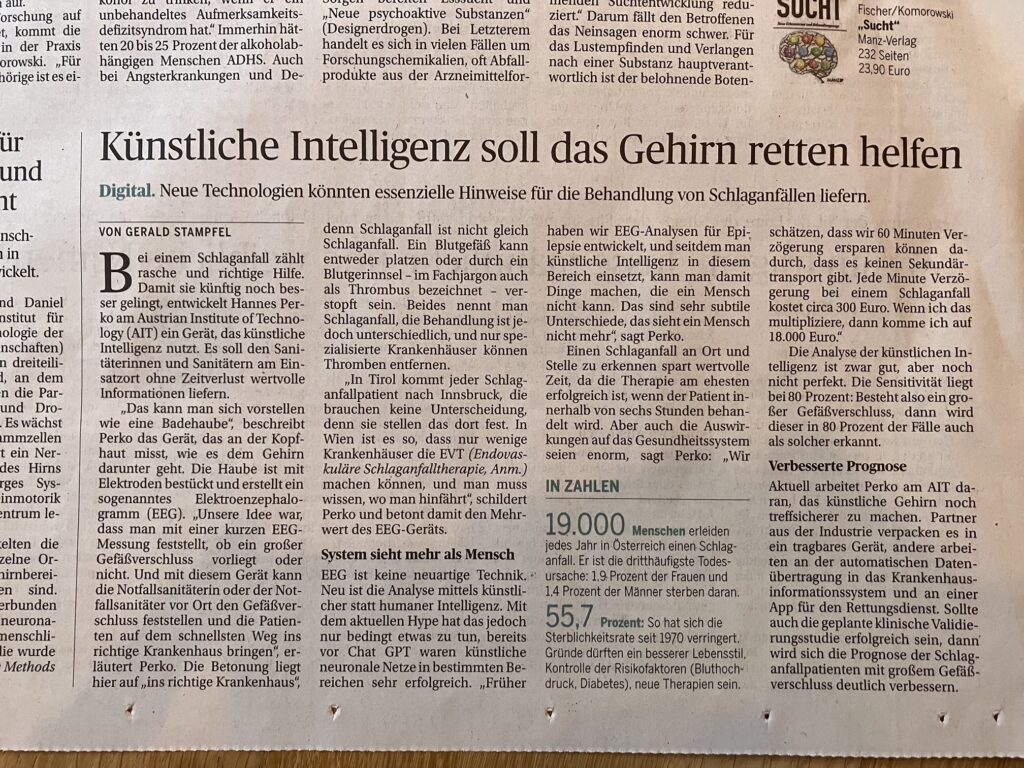
Project Collaboration: MDR in AIS joins forces with POC4TRIAGE
A new cooperation is on the horizon. MDR in AIS and POC4TRIAGE plan to identify shared working fields for an effective exchange and progress in innovating stroke care infrastructure.
About POC4TRIAGE project:
Revolutionizing Urgent Care with Innovative Point-of-Care Technologies
The primary objective of POC4TRIAGE is to develop and clinically validate novel POC devices and edge computing models that will significantly enhance the efficiency of patient triage. The project aims to provide healthcare professionals with real-time data analysis, thereby reducing response times and improving patient outcomes across Europe.
Website:

German “Die Presse” Newspaper Article
Artificial intelligence aims to help save the brain
In the case of a stroke, time is crucial. A blocked blood vessel can sometimes be reopened, but you need to be quick and at the right hospital. To make this happen, Hannes Perko from the Austrian Institute of Technology (AIT) is developing artificial intelligence that provides valuable information to paramedics at the scene without any delay.
“You can imagine it like a shower cap,” Perko describes a device that measures how the brain underneath is doing through the scalp. The cap is equipped with electrodes and creates an electroencephalogram (EEG). “Our idea was to determine with a short EEG measurement whether there is a large vessel blockage or not. By giving the device to emergency medical responders, they can determine the blockage on-site and take the patient directly to the right hospital,” explains Perko.
The emphasis here is on the right hospital because not all strokes are the same. A blood vessel can either burst or become blocked by a blood clot, called a thrombus in medical terms. Both are called strokes, but the treatment is different, and only specialized hospitals can remove thrombi. “In Tyrol, every stroke patient goes to Innsbruck, and they don’t need to distinguish because they can identify it there. In Vienna, only a few hospitals can perform EVT (Endovascular Stroke Therapy), so you need to know where to go,” emphasizes Perko about the benefit of the EEG device.
EEG is not a new technique. What’s new here is the analysis using artificial rather than human intelligence. While it may relate to the current hype, artificial neural networks were already helpful in certain areas before ChatGPT. “We used to develop EEG analyses for epilepsy, and since artificial intelligence has been applied in this field, we can do things that humans can’t. These are very subtle differences that humans can no longer perceive,” says Perko.
Recognizing a stroke on-site saves valuable time and money. Treatment is most successful if patients are treated within the first 6 hours. But the impact on the healthcare system is also significant, according to Perko: “We estimate that we can save 60 minutes of delay by avoiding secondary transport. Every minute of delay in a stroke costs around 300 euros. If I multiply that, I come to 18,000 euros.”
The analysis by the artificial intelligence is good but not perfect. The sensitivity is 80%. So, if there is a large vessel blockage, it will be detected as such in 80% of cases. Perko is currently working on making the artificial brain even more accurate. Partners from the industry are packaging the analysis into a portable device, others are working on automatic data transfer to the hospital information system and an app for emergency services. If the planned clinical validation study is successful, the prognosis for stroke patients with large vessel blockages will improve significantly.
Author:
Austrian Institute of Technology (AIT)
